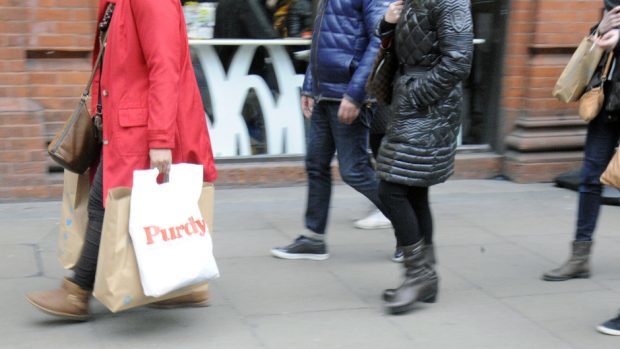Retailers in Scotland suffered a downbeat April as “feeble” sales of shoes and clothing drove a steeper decline on the high street seen in months.
Research from the Scottish Retail Consortium (SRC) said like-for-like sales in the four weeks to 30 April fell 3.3% over the year, hit by the worst performing month for clothing and footwear since the same month in 2008.
The retail group said “unsettled and cold weather” put a chill on sales of retailers’ new Spring season ranges, while sales of sandals likewise “did not take off” despite earlier than usual discounts.
Food sales fell by 1.7% in April – a better result compared to the 2% decline seen in March. All non-food sales declined 4.4%, registering its worst performance since November 2012, SRC said.
David Lonsdale, SRC director, said: “Even adjusted for shop price inflation, which is falling at the moment, these results are somewhat downbeat. The total value of retail sales in Scotland slipped again last month, declining by 1.5%. Falls were witnessed across all retail categories. Sales of non-food items in particular recorded a marked fall, the poorest monthly result in over three years. Unfortunately, even accounting for online sales didn’t turn the non-food category into positive territory, with clothing and footwear especially feeble and posting their weakest performance for eight years.
“Grocery sales, whilst down, were the best performing category and were pretty much in line with recent months and indeed a touch better than over the past year as a whole.
“Customers remain cash-conscious and retail spending is fragile, perhaps weighed down by talk over recent weeks of higher taxes on wages and for council services. Hopefully our new MSPs can channel their collective energies into creating the conditions which help lift private sector growth and inject some much needed consumer spending and confidence into the economy.”
David McCorquodale, Head of Retail at KPMG, added: “The category which suffered most compared with last year was clothing and footwear. In 2015, a sunnier and warmer spell resulted in encouraging sales for Spring/Summer fashions. This year, however, the weather was cooler and mixed. The subdued conditions brought subdued sales and, despite promotions being run by major fashion retailers, it saw consumers making purchases at times when items can be worn rather than simply buying the latest arrivals in the stores.”
Meanwhile, the election and upcoming referendum on Britain’s membership in the European Union also affected big-ticket items in the furniture, flooring and home accessories category in April.
“Larger ticket sales in the non-food category may have suffered from low consumer confidence and political uncertainty caused by the election and upcoming referendum,” he said. “The grocery market continues to battle the headwinds of deflation and over-capacity, which is positive for the consumer but challenging for the retailers who strive to increase the loyalty of their customers.
“With the cost base of retailers permanently hit by the introduction of the National Living Wage, the relentless drive for improved sales and productivity is forcing them to consider their own business models.
Some high profile retail failures remind us that adapting to survive is as important as ever for the future of the sector,” he added.










